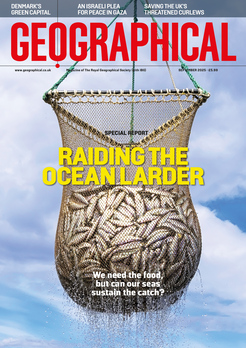
The world will end when the Doomsday Clock strikes midnight. And for 2024, midnight is only 90 seconds away!
By
The Doomsday Clock, which was established by members in 1947, uses the hands of a clock to represent the upcoming likelihood of a human-made global catastrophe. The closer the clock gets to striking midnight then the closer we are to disaster.
The Bulletin of the Atomic Scientists was established in 1945 by Albert Einstein, Robert Oppenheimer, and the University of Chicago scientists who had helped develop the first atomic weapons in the Manhattan Project. Two years later, the members created the Doomsday Clock, and every January for the last 77 years, members of the Bulletin have assessed the world’s geo-political and environmental situation and set the clock hands accordingly. And this year – like last year – we are a mere 90 seconds from midnight.
The original 1947 time on the Doomsday Clock was seven minutes to midnight. Since then, the clock has been moved backwards eight times (the furthest from midnight was 17 minutes in 1991) and forward 17 times. The current 90 seconds to midnight is the closest it has ever been to midnight.

The decision to maintain the clock at such a high-risk level was made because of a variety of global threats, including the Russia-Ukraine war and deterioration of nuclear arms reduction agreements; the Climate Crisis and 2023’s official designation as the hottest year on record; the increased sophistication of genetic engineering technologies; and the dramatic advance of generative AI which could magnify disinformation and corrupt the global information environment making it harder to solve the larger existential challenges.
The Doomsday Clock statement regarding the 90 seconds to midnight status said, ‘Ominous trends continue to point the world toward global catastrophe. The war in Ukraine and the widespread and growing reliance on nuclear weapons increase the risk of nuclear escalation. China, Russia, and the United States are all spending huge sums to expand or modernize their nuclear arsenals, adding to the ever-present danger of nuclear war through mistake or miscalculation. In 2023, Earth experienced its hottest year on record, and massive floods, wildfires, and other climate-related disasters affected millions of people around the world. Meanwhile, rapid and worrisome developments in the life sciences and other disruptive technologies accelerated, while governments made only feeble efforts to control them. . .. But the world can be made safer. The Clock can move away from midnight.’
Gov. Jerry Brown, executive chair of the Bulletin said: ‘As though on the Titanic, leaders are steering the world toward catastrophe–more nuclear bombs, vast carbon emissions, dangerous pathogens and artificial intelligence. Only the big powers like China, America and Russia can pull us back. Despite deep antagonisms, they must cooperate – or we are doomed.’
Although talk of us all being ‘doomed’ doesn’t make for cheery bedtime reading, there is still some hope. As Rachel Bronson, PhD, president and CEO of the Bulletin, says, ‘Make no mistake: resetting the Clock at 90 seconds to midnight is not an indication that the world is stable. Quite the opposite. It’s urgent for governments and communities around the world to act. And the Bulletin remains hopeful—and inspired—in seeing the younger generations leading the charge.’
Related articles
How is climate change impacting the seasons
Oppenheimer’s legacy: nuclear test sites around the world
AI to impact 40 per cent of jobs worldwide and deepen inequality




